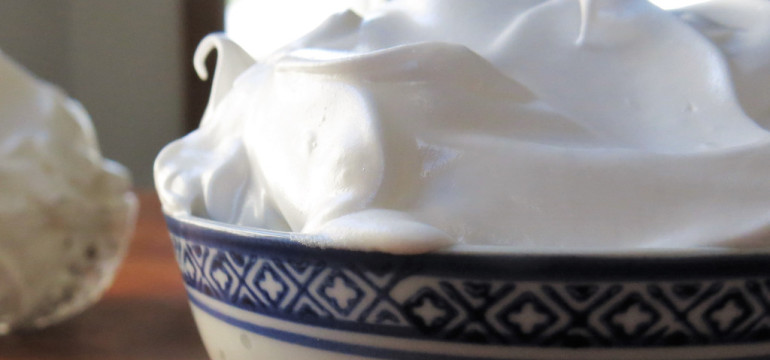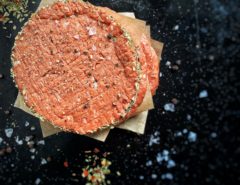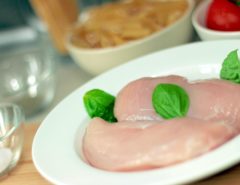By: Janelle Myers
This post originally appeared on Janelle’s blog: F-chem 101
I’m on an ongoing quest for the perfect meringue—I sort of have a thing for egg whites, as you may remember. This time, we put the fluffy white stuff on top of cupcakes and cover it in more chocolate for good measure, and oh, is it ever delicious.
But even though the chocolate tries to steal the glory, today we want to focus on the ethereal cloud of meringue that holds it together. It still amazes me that the coarse, airy, large-bubbled layer on top of a lemon meringue pie bears the same name (and uses the same ingredients) as the dense, silky, pliable wonder that coats baked Alaskas and crowns these cupcakes.
The main difference stems from a quick heating step at the very beginning. We heat the egg whites and sugar over a double boiler before whipping, which dissolves the sugar fully. Whipping this viscous syrup can’t incorporate nearly as much air as whipping unheated egg whites, and less air creates a denser product.
To put this theory to the test, I made three meringues: one unheated, one heated to 120 F, and one heated to 170 F. The higher temperature kills salmonella in the process—why not, you know?
The results: the 120 F came in head and shoulders above the others. With smooth, creamy texture and impressive thickness, it made me want to eat it with a spoon. (Ahem. That may have happened.)
The unheated meringue performed just like those pie toppings: light and spongy, with bubbles large enough that your tongue can feel them. Not terrible, but not right for this.
The high-temperature meringue came in as the biggest surprise with a texture closer to the unheated than the 120 F. It reverted to the larger bubbles, leaving a sensation of coarseness that did not appeal to me.
This test tells me that as long as I can trust my eggs, I’m sticking with 120 F for my ever-improving meringues. As for why the high-heat version turned out so disappointing, I don’t have a full answer. You’ll get some protein setting (ovotransferrin at 140 F, for example), but most of the proteins should be intact at 170 F. Anyone out there have ideas?
 Janelle Myers is a chemist turned cook who loves figuring out the science behind great food. She grew up loving the kitchen and making inordinate amounts of chocolate chip cookies, and the food science part of it clicked in college, when she did her senior research project on cocoa powder. Since then she has worked in restaurants doing both pastry and savory cooking, founded the food science blog fchem101.com, and recently moved to Boston to intern at America’s Test Kitchen. She loves a good challenge in the kitchen, but it’s still hard to beat a great chocolate chip cookie.
Janelle Myers is a chemist turned cook who loves figuring out the science behind great food. She grew up loving the kitchen and making inordinate amounts of chocolate chip cookies, and the food science part of it clicked in college, when she did her senior research project on cocoa powder. Since then she has worked in restaurants doing both pastry and savory cooking, founded the food science blog fchem101.com, and recently moved to Boston to intern at America’s Test Kitchen. She loves a good challenge in the kitchen, but it’s still hard to beat a great chocolate chip cookie.








Leave a Reply